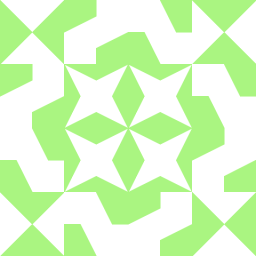Multiple graphs over multiple pages using ggplot
Solution 1
library(plyr)
library(gridExtra)
p = ggplot(tab, aes(x=Date)) +
geom_line(aes(y=Tmin), col="blue", size=0.1)
plots = dlply(tab , "Station", `%+%`, e1 = p)
ml = do.call(marrangeGrob, c(plots, list(nrow=8, ncol=1)))
ggsave("multipage.pdf", ml)
untested.
Solution 2
You should simplify your plot since once you get the right order with a simple plot you just replace it with your complicated one. ggplot2 are based on grid package so you need to use gridExtra to arrange your plots. Then you loop through , for each 8 plots, you store them in a list and you call grid.arrange over it, and you repeat this until the end of your plots...
library(gridExtra)
library(ggplot2)
pdf('test.pdf', width=21, height=27)
i = 1
plot = list()
for (n in unique(tab$Station)){
### process data for plotting here ####
plot[[i]] = ggplot(tab[tab$Station==n], aes(x=Date)) +...
if (i %% 8 == 0) { ## print 8 plots on a page
print (do.call(grid.arrange, plot))
plot = list() # reset plot
i = 0 # reset index
}
i = i + 1
}
if (length(plot) != 0) {
print (do.call(grid.arrange, plot))
}
dev.off()
Solution 3
Faceting might be the way to go. Decide how many faceted mini-plots you want per page, then loop through the required number of times, generating a png or a pdf as you go. So if you have 200 data items and you want 50 per page, in facets of 5 across and 10 down, just loop through 200/50 = 4 iterations. Crude, but should work.
library(ggplot2)
ii <- 7
nn <- 49
mydf <- data.frame(date = rep(seq(as.Date('2013-03-01'),
by = 'day', length.out = ii), nn),
value = rep(runif(nn, 100, 200)))
mydf$facet.variable <- rep(1:nn, each = ii)
p <- ggplot(mydf, aes(x = date, y = value)) +
geom_line() +
facet_wrap(~ facet.variable, ncol = ii)
print(p)
Related videos on Youtube
José Monteiro
Updated on September 14, 2022Comments
-
 José Monteiro 9 months
José Monteiro 9 monthsI am doing an exploratory analysis of my data and need to plot multiple graphics using ggplot. The amount of graphics is really huge (206 Stations), and I wanted to plot them in 1 column vs. 8 rows per page over the so many pages needed. I am aware of functions like viewport or grid.arrange, but I am not managing to make them work in this case. I have already noticed that layout() nor par(mfrow=c(8,1)) do not work with ggplot, but I send the part of the code where I am stuck bellow. Any help would be much appreciated!
pdf('test.pdf', width=21, height=27) par(mfrow=c(8,1)) for(i in levels(tab$Station)) { print(ggplot(tab[tab$Station==i], aes(x=Date)) + geom_line(aes(y=Tmin), col="blue", size=0.1) + geom_line(aes(y=Tmax), col="red", size=0.1) + geom_text(aes(x=as.Date('2010-01-01'), y=45), label=i) + ylim(0, 45) + scale_x_date(labels = date_format("%Y")) + theme_bw() + theme( plot.background = element_blank() ,panel.grid.major = element_blank() ,panel.grid.minor = element_blank() ,panel.border = element_rect(color = 'black') ,panel.background = element_blank() ) ) } dev.off()-
Statwonk over 9 yearsHi Jose, would you mind making this a reproducible examples? That commonly means providing toy data so that we can just grab the code and run it. Most often, people use the
data()function to do this. For exampledata(mtcars)loads thatmtcarsdata.frame into memory. -
Alison Bennett over 6 yearsI know it's an old question - but try using the facet_wrap_paginate function in the ggforce package. See help here cran.r-project.org/web/packages/ggforce/ggforce.pdf that's how I solved my similar problem.
-
Gerome BochmannDid the answer by @baptiste work?
-
-
 llewmills about 6 yearscould you explain what you did to create the
llewmills about 6 yearscould you explain what you did to create theplotsobject above? What does%+%do? -
 baptiste about 6 years
baptiste about 6 years%+%overrides the data in a ggplot -
 llewmills about 6 yearsI'm still an r green-belt so need help from a 4th-Dan black-belt such as yourself. Also I'm only just now getting familiar with using
llewmills about 6 yearsI'm still an r green-belt so need help from a 4th-Dan black-belt such as yourself. Also I'm only just now getting familiar with usingplyranddplyrinstead of theapplyfamily. So I'm guessing here, but does this mean you've passed the subsettedtabobject (subsetted by Station) into the ggplotp, using the%+%function to override the place thetabargument held in the original? If so that's fantastic. -
 llewmills about 6 yearsthan you @baptiste. Excuse the follow-up but what does the
llewmills about 6 yearsthan you @baptiste. Excuse the follow-up but what does thee1 =do in thedlplyfunction? When I remove it and just putpin its place theplotsfunction still works but suddenly calling theplotsobject results in no graphs appearing. -
 baptiste about 6 years
baptiste about 6 years%+%is an infix operator, with two arguments namede1ande2. It's defined rather awkwardly, with the case of interest here consideringe1a ggplot, ande2a data.frame (or other things, actually). The dlply loop (equiv. lapply) would feed the function with data.frames as first parameter by default, unless one passes explicitly a plot as named first argument (dlply then jumps to the next one). -
Marinka almost 2 yearsSo I tried this method and it did not work. I got this error: Error in gList(data = list(wrapvp = list(x = 0.5, y = 0.5, width = 1, : only 'grobs' allowed in "gList" - Does this method still work?